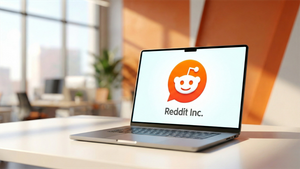
What started out to be a promising third quarter for U.S. stocks turned into a dud. On the backs of artificial intelligence (AI) excitement, the S&P 500 stormed out of the gates in July only to trend lower in August and September. The large-cap index finished down 3.7% in Q3 but remained up 11.7% for the year.
With the dust settling ahead of the Halloween season, the stock market finds itself with a spooky yet familiar concoction of inflation and higher interest rates. This leaves investors to decide whether to ‘fear the Fed’ and a potential bear market or capitalize on the weakness by buying cheaper stocks.
Eerily similar to 2022, all S&P global sectors retreated in Q3 with the exception of energy, which rose more than 10%. The broad-based selloff is reason for concern — but may also be an opportunity. If companies can deliver better-than-expected third-quarter results, market sentiment could become more spirited ahead of the key holiday earnings period.
With stock prices and P/E ratios down and dividend yields up, Christmas may have arrived early for long-term investors. From humbled mega cap techs to beaten-up retailers, gifts are available in many shapes and sizes. More than 70% of S&P 500 stocks finished in the red last quarter. These three were the biggest losers.
Why Did SolarEdge Stock Fall So Much?
The worst third-quarter performer was SolarEdge Technologies, Inc. (NASDAQ: SEDG), which plummeted 52%. The Israeli provider of solar energy inverter solutions enters Q4 on an eight-month losing streak that stems from, yes, higher interest rates. Since residential and commercial solar projects are typically financed, high rates have deterred activity across the supply chain. With lower demand and higher input costs pressuring industry profits, SolarEdge management offered a weak Q3 outlook.
In the near term, operating conditions will likely stay cloudy for SolarEdge — but the longer-term outlook is bright. As clean energy initiatives progress, solar power is expected to become an increasing part of the energy mix. SolarEdge’s opportunity goes beyond solar inverters for the home and businesses and into markets like energy storage, e-mobility and industrial automation.
Maintaining sight of the multi-year growth horizon, Wall Street has maintained its bullish view during the SolarEdge selloff. The stock has a consensus ‘buy’ rating and $274 price target that suggests the sun will rise again.
Is Insulet Stock Oversold?
After reaching an all-time high in May 2023, Omnipod maker Insulet Corporation (NASDAQ: PODD) fell 45% in Q3. There are a couple of things that make this plunge intriguing: 1) the company handily topped first and second-quarter earnings expectations and 2) trading volume on the way down has been very light. This should make investors feel comfortable about stepping into a stock that Wall Street is becoming more and more bullish on.
Over the past 30 days, Insulet has been upgraded to ‘buy’ on three occasions. This week, Jeffries moved from a hold to buy, saying that concerns about strong demand for a ‘GLP-1’ class of obesity and diabetes drugs are overblown. Some have claimed the drugs’ popularity threatens demand for Insulet’s continuous glucose monitoring (CGM) systems that deliver and manage insulin levels for people with diabetes. Jeffries and others are predicting that the drug competition overhang will blow over, allowing the stock to resume trading on its solid fundamentals. The latest consensus target implies more than $100 share price appreciation over the next 12 months.
Will Dollar General Turn Things Around?
Wall Street sentiment towards Q3’s third worst performer, Dollar General Corporation (NYSE: DG), is turning more bearish. Even with the retailer down 38% last quarter and 60% from its 2022 peak, analysts have slapped three ‘sells’ on the stock since mid-September. This week, Bank of America reiterated its Underperform rating and lowered its price target to $105, citing “softening sales trends and expense deleverage risks.” Translation: inflation is having a disproportionate effect on Dollar General’s lower-income customers, and cost reduction efforts are unproven.
Two years removed from pandemic stardom and no longer a destination for cheap cleaning supplies and other household essentials, Dollar General finds itself in an odd position of retail irrelevance. With Walmart, Costco and other big box stores performing well in a tough macro environment, Dollar General will have to find new ways to attract shoppers and investors.
On Saturday, the company opened its first-ever Montana location, expanding its footprint to all 48 continental states. A plan to open nearly 1,000 stores this year is risky in the current economy but may prove clairvoyant over time if inflation and rate pressures subside.





